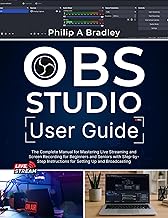Summary of "DBI101_Topic073"
Summary of DBI101_Topic073
This video lecture focuses on two main topics related to data analysis in R:
- Introduction to [RStudio](https://www.amazon.com/dp/B0FMYMCB2Q?tag=dtdgstoreid08-20) as a User-Friendly Interface for R
- Identification and Removal of Unusual Observations (Outliers) in Data
Main Ideas and Concepts
1. [[RStudio](https://www.amazon.com/dp/B0FMYMCB2Q?tag=dtdgstoreid08-20)](https://www.amazon.com/dp/B00MTF6ZVC?tag=dtdgstoreid08-20): Enhancing R with a Mouse-Enabled Interface
- R is originally command-line based and requires users to remember and type commands without mouse support.
- [[RStudio](https://www.amazon.com/dp/B0FMYMCB2Q?tag=dtdgstoreid08-20)](https://www.amazon.com/dp/B00MTF6ZVC?tag=dtdgstoreid08-20) is a popular interface built on top of R that adds mouse-driven features to simplify usage.
- The video demonstrates:
- How to download and install [[RStudio](https://www.amazon.com/dp/B0FMYMCB2Q?tag=dtdgstoreid08-20)](https://www.amazon.com/dp/B00MTF6ZVC?tag=dtdgstoreid08-20) from the official website.
- The layout of [RStudio](https://www.amazon.com/dp/B0FMYMCB2Q?tag=dtdgstoreid08-20):
- Editor (left side): Where R scripts and commands are written.
- Right side panels:
- Packages tab: Shows loaded packages; users can easily load or unload packages.
- Help tab: Access documentation and help files for R functions.
- History tab: Logs all executed commands for easy reuse.
- Environment tab: Displays variables and datasets currently loaded in memory.
- Import Dataset button: Allows importing data files (Excel, CSV, etc.) without manually writing commands or handling file paths.
- The import feature automates package installation and file path handling, simplifying data loading.
- [[RStudio](https://www.amazon.com/dp/B0FMYMCB2Q?tag=dtdgstoreid08-20)](https://www.amazon.com/dp/B00MTF6ZVC?tag=dtdgstoreid08-20) also provides interactive features like sorting and filtering data, similar to Excel or Power BI.
2. Identifying and Handling Outliers (Unusual Observations) in Data
- Outliers are data points that differ significantly from other observations and can distort statistical analysis.
- They may arise from:
- Data entry errors (e.g., typing 39 instead of 93).
- Legitimately unusual but rare events (e.g., a customer buying goods worth 25,000 rupees when usual purchases are 5,000–10,000).
- The video explains how to detect outliers in a dataset using [[RStudio](https://www.amazon.com/dp/B0FMYMCB2Q?tag=dtdgstoreid08-20)](https://www.amazon.com/dp/B00MTF6ZVC?tag=dtdgstoreid08-20):
- Use the
boxplot()function to visualize the distribution of a variable and spot outliers as dots outside the box. - Use the
identify()function to interactively click on points in the plot and get their observation indices. - Use the
attach()function to avoid repeatedly typing the dataset name when referring to variables. - After identifying outliers by their indices, these observations can be removed from the dataset using negative indexing (e.g.,
data[-c(index1, index2), ]). - Removing outliers helps ensure that statistical analysis is not skewed by unusual data points.
Detailed Methodology / Instructions
Installing and Using [[RStudio](https://www.amazon.com/dp/B0FMYMCB2Q?tag=dtdgstoreid08-20)](https://www.amazon.com/dp/B00MTF6ZVC?tag=dtdgstoreid08-20)
- Search for “[[RStudio](https://www.amazon.com/dp/B0FMYMCB2Q?tag=dtdgstoreid08-20)](https://www.amazon.com/dp/B00MTF6ZVC?tag=dtdgstoreid08-20)” on Google.
- Download the free version (~200 MB) from the official site.
- Install [[RStudio](https://www.amazon.com/dp/B0FMYMCB2Q?tag=dtdgstoreid08-20)](https://www.amazon.com/dp/B00MTF6ZVC?tag=dtdgstoreid08-20) like any other software.
- Open [[RStudio](https://www.amazon.com/dp/B0FMYMCB2Q?tag=dtdgstoreid08-20)](https://www.amazon.com/dp/B00MTF6ZVC?tag=dtdgstoreid08-20) and familiarize yourself with its panels: - Editor (left) - Packages, Help, History, Environment (right)
- Use Import Dataset to load Excel or other data files: - Select the file type (e.g., Excel). - Browse and select the file. - [[RStudio](https://www.amazon.com/dp/B0FMYMCB2Q?tag=dtdgstoreid08-20)](https://www.amazon.com/dp/B00MTF6ZVC?tag=dtdgstoreid08-20) may prompt to install required packages automatically. - Preview and confirm the import.
Detecting Outliers Using [[RStudio](https://www.amazon.com/dp/B0FMYMCB2Q?tag=dtdgstoreid08-20)](https://www.amazon.com/dp/B00MTF6ZVC?tag=dtdgstoreid08-20)
- Load the dataset and attach it using
attach(dataset_name). - Create a boxplot of the variable of interest, e.g.,
boxplot(income). - Identify outliers visually as dots outside the box in the plot.
- Use the
identify()function to click on outlier points and get their observation numbers:r identify(x = 1:n, y = dataset$variable)wherexis the index andyis the variable values. - After identifying outliers, remove them by negative indexing:
r clean_data <- dataset[-c(outlier_indices), ] - Proceed with analysis on the cleaned dataset.
Speakers / Sources Featured
- Main Speaker: The instructor/lecturer guiding through [[RStudio](https://www.amazon.com/dp/B0FMYMCB2Q?tag=dtdgstoreid08-20)](https://www.amazon.com/dp/B00MTF6ZVC?tag=dtdgstoreid08-20) installation and outlier detection in R.
- No other speakers or external sources are explicitly mentioned.
Conclusion
This lecture provides a practical introduction to using [[RStudio](https://www.amazon.com/dp/B0FMYMCB2Q?tag=dtdgstoreid08-20)](https://www.amazon.com/dp/B00MTF6ZVC?tag=dtdgstoreid08-20) to make R more accessible through mouse-driven features and graphical interfaces. It also covers essential data cleaning techniques by identifying and removing outliers to improve the quality of statistical analysis.
Category
Educational
Share this summary
Featured Products

EMART Backdrop Stand 10x7ft(WxH) Photo Studio Adjustable Background Stand Support kit with 2 Crossbars, 8 Clamps, 2 Sandbags and Carry Bag for Parties, Events Decoration, Wedding, Photography
View on Amazon

OBS Studio User Guide: The Complete Manual for Mastering Live Streaming and Screen Recording for Beginners and Seniors with Step-by-Step Instructions for Setting Up and Broadcasting
View on Amazon

Introduction to Robust Estimation and Hypothesis Testing (Statistical Modeling and Decision Science)
View on Amazon
![MixPad Free Multitrack Recording Studio and Music Mixing Software [Download]](https://m.media-amazon.com/images/I/71ltIxIuz1L._AC_UL320_.jpg)
